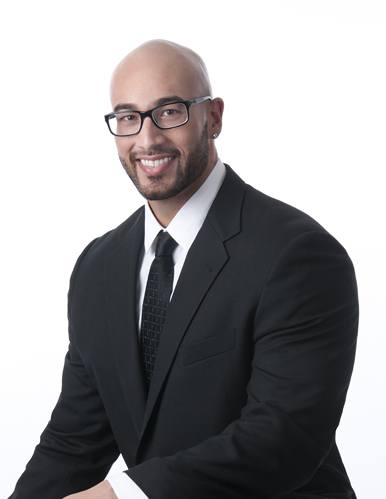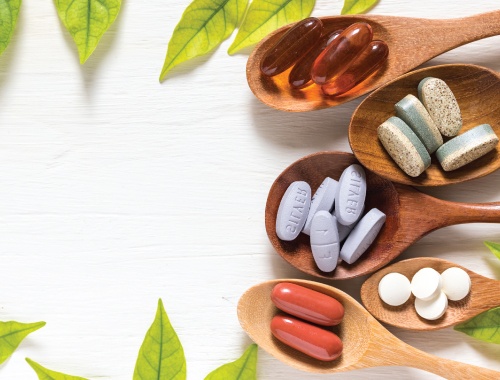
When it comes to cholesterol, the “bad” kind, or low-density lipoprotein (“LDL”) cholesterol, tends to get most of the attention. And, it makes sense – after all, high LDL cholesterol can lead to a number of serious health issues, including an elevated risk for heart attack and stroke. Yet, the “good” cholesterol or high-density lipoprotein (“HDL”) is also an important measure of heart health.
Find out what you should know about the causes, optimal levels, and methods for achieving optimal HDL cholesterol below.
Cholesterol is a waxy protein found in all of the cells. It has many important functions, including the ability to build the body’s cells, and plays a crucial role in the development of hormones and vitamin D.
LDL or “bad” cholesterol can eventually accumulate within blood vessel walls, and narrow passageways, potentially leading to a clot that can cause a heart attack or stroke. HDL cholesterol, on the other hand, eliminates excess cholesterol in the blood by picking it up and transporting it back to the liver. There, the excess cholesterol is broken down and removed from the body.
People with higher levels of HDL cholesterol have a lower risk of heart attack and stroke. [1] Having high HDL can have anti-inflammatory and antioxidant effects. [2] Yet, because elevated LDL levels are known to pose a risk for serious health issues, doctors will often focus on LDL levels first. With that said, there is a significant overlap among lifestyle recommendations for lowering LDL cholesterol and raising HDL cholesterol.
Optimal HDL cholesterol levels vary by age and sex. In general, the recommendations for healthy HDL levels are as follows:
There are a number of factors that can affect HDL levels. Some of these factors are within your control to address, while others are not. Here are some of the most common causes behind low HDL:
While there are medications available to help individuals control their cholesterol levels when clinically indicated, there are also many lifestyle habits you can adopt to raise your HDL levels. Here are some of the most impactful changes you can make to boost your HDL:
Although low HDL levels are a health concern that should be addressed, there are many practical ways to raise them. From exercising regularly to enhancing your diet to minimize processed foods and prioritize heart-healthy choices, the lifestyle habits you use to achieve healthier cholesterol levels will also lead you to greater overall wellness.
And, with the help of the Cenegenics team who can offer tailored recommendations based on your comprehensive health evaluation, you can have peace of mind in knowing you’re making the best choices to optimize your cholesterol levels and your health.
To learn more about both the bad and good types of cholesterol and how they affect your health, read our full-length blog – Causes of High Cholesterol.
Our world-class physicians create a personalized plan to help you feel 10+ years younger. You’ll be more energetic, lose weight, sleep better, have more libido, and think more clearly. Click below to schedule a free consultation with one of our physicians. It’s quick + easy.
Key Resources
This guide was produced with contributions from the following key resources:
The Cenegenics Education and Research Foundation
The Textbook of Age Management Medicine Volume 1: Mastering Healthy Aging Nutrition, Exercise and Hormone Replacement Therapy
The Cenegenics Education and Research Foundation
The Textbook of Age Management Medicine Volume 2: Mastering Healthy Aging Nutrition, Exercise and Hormone Replacement Therapy
Textbook Authors:
Jeffrey Park Leake, M.D., CPT
Dr. Jeffrey Park Leake is a Partner and Director of Education at Cenegenics Elite Health specializing in age management and wellness. Having trained hundreds of physicians worldwide, Dr. Leake is also the Director of Education for the Clinical Strategies for Healthy Aging course at AMM Educational Foundation.
Todd David Greenberg, M.D., CSCS
Dr. Todd Greenberg is a practicing physician with a broad range of expertise, including wellness, exercise, sports injuries, and MRI of sports injuries. He is a Radiology Clinical Associate Professor at the University of Washington.
Additional Resources
What Are Processed Foods & Why Are They Dangerous?
4 Dos and Don’ts for Eating Healthy While Traveling
Healthy Snacks to Get You Through the Day
The Role of Vitamins and Minerals as Micronutrients
How Cenegenics Programs Differ from a Typical Weight Loss Program
Why Am I Gaining Weight: Psychology of Weight Loss
Recognizing Your Risk Factors of Type 2 Diabetes
References
[1] Mayo Clinic, “HDL cholesterol: How to boost your ‘good’ cholesterol.” 24 Oct. 2018. Retrieved from URL: https://www.mayoclinic.org/diseases-conditions/high-blood-cholesterol/in-depth/hdl-cholesterol/art-20046388
[2] K Mahdy Ali, et al. “Cardiovascular disease risk reduction by raising HDL cholesterol – current therapies and future opportunities.” British Journal of Pharmacology. Nov. 2012. Retrieved from URL: https://www.ncbi.nlm.nih.gov/pmc/articles/PMC3504986/
[3] NIH, “HDL: The ‘Good’ Cholesterol.” 18 Apr. 2019. Retrieved from URL: https://medlineplus.gov/hdlthegoodcholesterol.html
[4] NIH; see above.
[5] NIH; see above.
[6] NIH; see above.
[7] NIH, “DASH Eating Plan.” 25 Apr. 2018. Retrieved from URL: https://medlineplus.gov/dasheatingplan.html
[8] Mayo Clinic; see above.
[9] Mayo Clinic; see above.
[10] Mayo Clinic; see above.
 Contributor: Rudy Inaba Vice President of Health Performance
Contributor: Rudy Inaba Vice President of Health Performance
Rudy Inaba is Cenegenics’ Vice President of Health Performance. He is a recognized fitness and sports nutrition consultant with nearly 15 years of experience in clinical exercise physiology and lifestyle management. After pursuing his Master of Science in Clinical Exercise Physiology at the University of Nevada Las Vegas, Rudy joined Cenegenics where he leads 19 clinical locations nationwide in their advancements in kinesiology, nutritional biochemistry, and their analyses of industry research & market trending.


